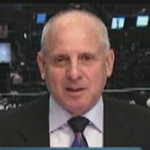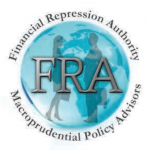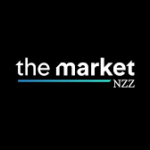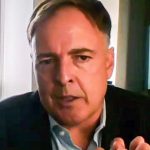
Link Here to the Quarterly Conference Call
 08/29/2022 - Dr. Albert Friedberg on Inflation, Commodities and the Investment Environment
08/29/2022 - Dr. Albert Friedberg on Inflation, Commodities and the Investment Environment
Link Here to the Quarterly Conference Call
 08/28/2022 - Dr. Albert Friedberg Quarterly Report
08/28/2022 - Dr. Albert Friedberg Quarterly Report
“Until the Fed shows some understanding of the issues here discussed and until they move to implement policies that will remove inflationary pressures and incentives to misallocate resources, we see no need to abandon our investment stance. It can be summed up as bullish on inflation and not bullish on growth.”
 08/28/2022 - Yra Harris – Dear Jerome
08/28/2022 - Yra Harris – Dear Jerome
“The FED cannot eliminate supply bottlenecks but it can reduce demand by raising rates and reducing liquidity through WEALTH DESTRUCTION. That means crushing the global stock markets as the Telegraph’s Ambrose Evans-Pritchard wrote in an oped, “The US Federal Reserve actively wishes to crush Stock Markets: Ignore It At Your Own Peril.” Evans-Pritchard delineates what the FED‘s objective is, and Powell and his minions, “are now on a mission to redeem themselves and prove they can conquer inflation after all. Zeal is a dangerous thing. That is why I fear the Jackson Hole of 2022.”
I believe the strong dollar is going to unleash some real pain upon the global financial system, which will fall back on the FED. Good thing the swap lines and repo facilities are in place to backstop the entire global financial system. Those who praise the strong DOLLAR are singing from a 1970s hymnal when trade was paramount to finance. But in today’s world of FED policy unleashing massive dollar funding upon the emerging markets, be very careful. KING dollar is not what it once was and this is coming from an Austrian-based sound money analyst.”
 08/26/2022 - The Roundtable Insight – Charles Hugh Smith on the Insanity of Central Banks in Addressing Inflation
08/26/2022 - The Roundtable Insight – Charles Hugh Smith on the Insanity of Central Banks in Addressing Inflation
 08/17/2022 - Yra Harris – Neutral
08/17/2022 - Yra Harris – Neutral
“he EQUITY markets have recovered more than 50% of their first-half losses stoking the call from WALL STREET that it is all clear WEENA. BUT I CAUTION: This is not an INVESTING MARKET BUT TRADING MARKET as we await to hear from Chair Jerome Powell on the FED‘s future path, especially as the central bank’s balance sheet reduction ramps up to its maximum levels next month. NOBODY can be certain of the impact of removing liquidity from what has been an over-leveraged market living on the liquidity drug provided by QE.”
 08/12/2022 - The Roundtable Insight – Doomberg and Yra Harris on Energy and Geo-Political Risks
08/12/2022 - The Roundtable Insight – Doomberg and Yra Harris on Energy and Geo-Political Risks
 08/04/2022 - Yra Harris – Dissecting the Fed With Darius Dale
08/04/2022 - Yra Harris – Dissecting the Fed With Darius Dale
“I also posit that the rise in rates may have been in response to a note published Monday night by Zoltan Pozsar, titled War and Interest Rates. The piece covers our favorite topic: global political economy. It is worth reading at least twice. A key takeaway is that Pozsar maintains that we need to take Powell at his word about his will to fight inflation and that the “risk of the FED hiking to 5or 6% is very real, and ditto the risk of rates cresting there despite economic and asset price pain.” If Pozsar is correct … well, do the math.”
 08/03/2022 - Charles Hugh Smith – A Rising USD and Geopolitical Risks/Aims
08/03/2022 - Charles Hugh Smith – A Rising USD and Geopolitical Risks/Aims 08/02/2022 - The Roundtable Insight – Darius Dale and Yra Harris on the Fed Pivot and Financial Markets
08/02/2022 - The Roundtable Insight – Darius Dale and Yra Harris on the Fed Pivot and Financial Markets
 08/02/2022 - Yra Harris – We’re Back?
08/02/2022 - Yra Harris – We’re Back?
“The strong dollar is not a blessing in these tumultuous financial conditions as it places a great deal of stress on the world’s emerging markets, which are BORROWED in US DOLLARS due to the FOMC’s flooding the global system with very low interest possible loans. Cheap dollar loans become expensive when interest rates rise and the cost of DOLLARS rise along with it. A classic case of this was in January 2015, when Eastern European countries borrowed in Swiss francs because of low Swiss interest rates coupled with a guaranteed level of euro/Swiss franc at 1.20, A NO BRAINER.
But when the Swiss National Bank could no longer hold the PEG the market panicked and the SWISS FRANC rallied in dramatic fashion, leaving borrowers stuck having to repay with expensive Swiss francs. This is the current situation confronting the massive amount of loans held by private and public emerging borrowers with prior cheap dollar loans. This is just the beginning of this important discussion. ”
 07/28/2022 - The Roundtable Insight – Daniel Lacalle, Peter Boockvar and Yra Harris on the Economy and the Financial Markets
07/28/2022 - The Roundtable Insight – Daniel Lacalle, Peter Boockvar and Yra Harris on the Economy and the Financial Markets
 07/28/2022 - Alejandro Tagliavini – Inflación global: ¿cerrar los bancos centrales?
07/28/2022 - Alejandro Tagliavini – Inflación global: ¿cerrar los bancos centrales?
“No sé si Milei tiene razón en cuanto a la oportunidad y el método, pero definitivamente los bancos centrales son como un cáncer al que debería ponérseles fin.”
 07/28/2022 - The Roundtable Insight – Charles Hugh Smith on the USD, Emerging Markets and the Investment Implications
07/28/2022 - The Roundtable Insight – Charles Hugh Smith on the USD, Emerging Markets and the Investment Implications
 07/25/2022 - Larry McDonald – If the Fed Marches on, They’re Creating Another Lehman Situation
07/25/2022 - Larry McDonald – If the Fed Marches on, They’re Creating Another Lehman Situation
“Financial instability is going to force the Fed out of its proposed policy path. There is so much risk showing up in things like credit default swaps on European banks or emerging market bonds. Our 21 Lehman systemic risk indicators globally are the highest since the financial crisis, a lot of these risk metrics blew through Covid levels which is really bad. That means the Fed is not going to be able to complete the job on inflation which gets you to inflation sticking around at something like 3 to 6%.”
 07/21/2022 - E.B. Tucker: U.S. Dollar rise will roil markets within 90 days
07/21/2022 - E.B. Tucker: U.S. Dollar rise will roil markets within 90 days
 07/21/2022 - Edward Chancellor: Largely Impossible to Normalize Interest Rates Without Collapsing the Economy
07/21/2022 - Edward Chancellor: Largely Impossible to Normalize Interest Rates Without Collapsing the Economy
Historian and author Edward Chancellor in an in-depth interview about the failed monetary policy of central banks and the difficult path to a healthier and more robust economic and financial system.
 07/19/2022 - Kevin Duffy – “Shakeout in Financial Markets has only just begun”
07/19/2022 - Kevin Duffy – “Shakeout in Financial Markets has only just begun”
“I think you want to look for companies that will be able to navigate this new world. They provide vital goods and services. They are self-funding and don’t rely on government subsidies. They are run by founders or owner-operators who take a long view. They try to remain apolitical. To me, the biggest risks lie in companies that suck up to the government and end up doing destructive things to shareholders. Nike for instance is trying to push certain official narratives that are going to alienate their customers in China. Yum Brands is unloading its chain of 1,000 KFC restaurants in Russia that took two decades to build. Those types of stocks are more likely to show up in the S&P 500 where everybody is positioned. If I’m right, the kinds of independent businesses I’m looking for will be seen as ports in the storm and trade at a premium.”
 07/18/2022 - The Roundtable Insight – Dr. Frank Shostak and Yra Harris on the Economy and Financial Markets from an Austrian School Economics View
07/18/2022 - The Roundtable Insight – Dr. Frank Shostak and Yra Harris on the Economy and Financial Markets from an Austrian School Economics View
 07/14/2022 - Join our Patreon – Become a Patron
07/14/2022 - Join our Patreon – Become a Patron
 07/14/2022 - Larry McDonald on Federal Reserve Risks to Emerging Markets
07/14/2022 - Larry McDonald on Federal Reserve Risks to Emerging Markets
“If the Fed keeps its policy path promises, take the tragedy in Sri Lanka and multiply it by ten across the globe over the next six months. Check-mate FOMC.” – Larry McDonald